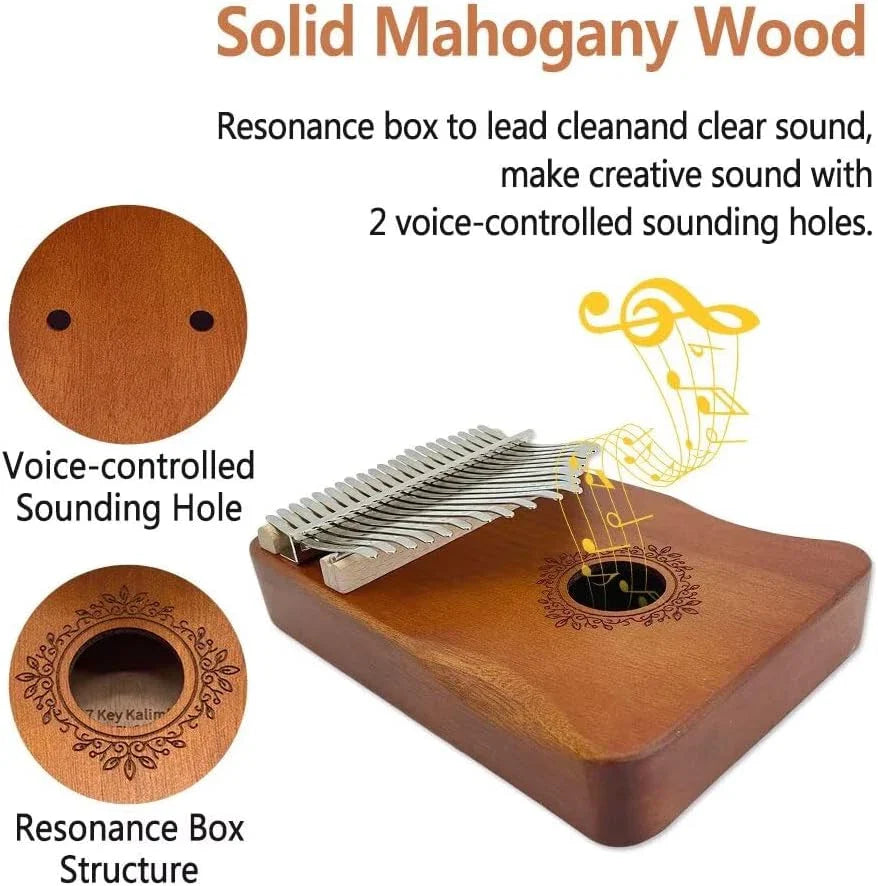Play the Melody of Your Heart with Your Fingertips: The Kalimba, Your Healing Instrument

In the world of musical instruments, there is a small and enchanting presence that produces an ethereal, healing sound and has quickly become popular worldwide: the kalimba. As a beautiful-sounding instrument with a very low barrier to entry, the kalimba has become a top choice for many music lovers and lifestyle seekers. This article will provide a comprehensive look at the kalimba, helping you find your very first "thumb piano."
What is a Kalimba?
The kalimba, also known as a thumb piano, is a traditional folk instrument that originated in Africa. It belongs to the lamellaphone family of percussive instruments. Its basic structure is simple: a wooden soundboard or box with a set of metal tines of varying lengths. The player simply uses their thumbs to pluck the tines, which then vibrate and produce a clear, pleasing sound.
The Origins and Culture of the Kalimba
The history of the kalimba can be traced back more than 3,000 years to the African continent. In Africa, it was widely used in religious ceremonies, social gatherings, and storytelling. While the modern kalimba has a more refined structure, its core ethereal tone and peaceful temperament remain unchanged, earning it the nickname of a "healing instrument."
Types and Materials of the Kalimba: How They Affect the Tone
A kalimba's tone and feel are primarily determined by its structure and materials. Understanding these factors can help you make a more informed choice.
By Structure
-
Flatboard Kalimba: The body is a solid piece of wood. Its advantages are a clearer, brighter sound with a shorter sustain, making it particularly suitable for playing fast-paced, lively songs.
-
Box Kalimba: The body has a hollow, resonating chamber inside. Its advantages are a louder volume and more resonance, resulting in a fuller sound. It usually features one or more "vibrato holes" that can be used to create a unique "wah-wah" effect.
By Wood Material
-
Mahogany: This is the most common kalimba wood, offering an affordable price and a warm, soft tone, making it ideal for beginners.
-
Acacia (Koa): Its tone is clearer and brighter than mahogany, with better treble performance. The wood grain is also more distinctive.
-
Walnut: It has a stable, heavy tone with excellent mid-to-low-range performance and strong penetration, making it suitable for players who prefer a deep, rich sound.
Beginner's Buying Guide: How to Choose Your First Kalimba?
With a wide variety of kalimbas available, it can be overwhelming for a beginner. Following these points will help you easily find the right one for you.
-
Number of Tines: 17-Key is the Top Choice
-
The most common is the 17-key kalimba. It has a wider range and can play most popular and classic songs.
-
10-key or 15-key kalimbas are smaller, but their range is limited, making them more suitable for playing simple children's songs or practicing basics. Therefore, we highly recommend that beginners start directly with a 17-key model.
-
-
Listen to the Sound: Experience It for Yourself
-
Before buying, it's best to listen to sound tests through videos or audio to compare the tones of different materials and brands. Pay attention to the clarity, the length of the sustain, and whether there's any buzzing.
-
A good kalimba should produce a crisp, stable sound from every tine. The high-pitched tines, in particular, should not be "dead" or have a buzzing sound.
-
-
Budget: Start with an Entry-Level Model
-
For beginners, an entry-level kalimba priced between $30-70 is more than enough. Brands at this price point (like Gecko, Lingting) typically have solid craftsmanship and stable tuning.
-